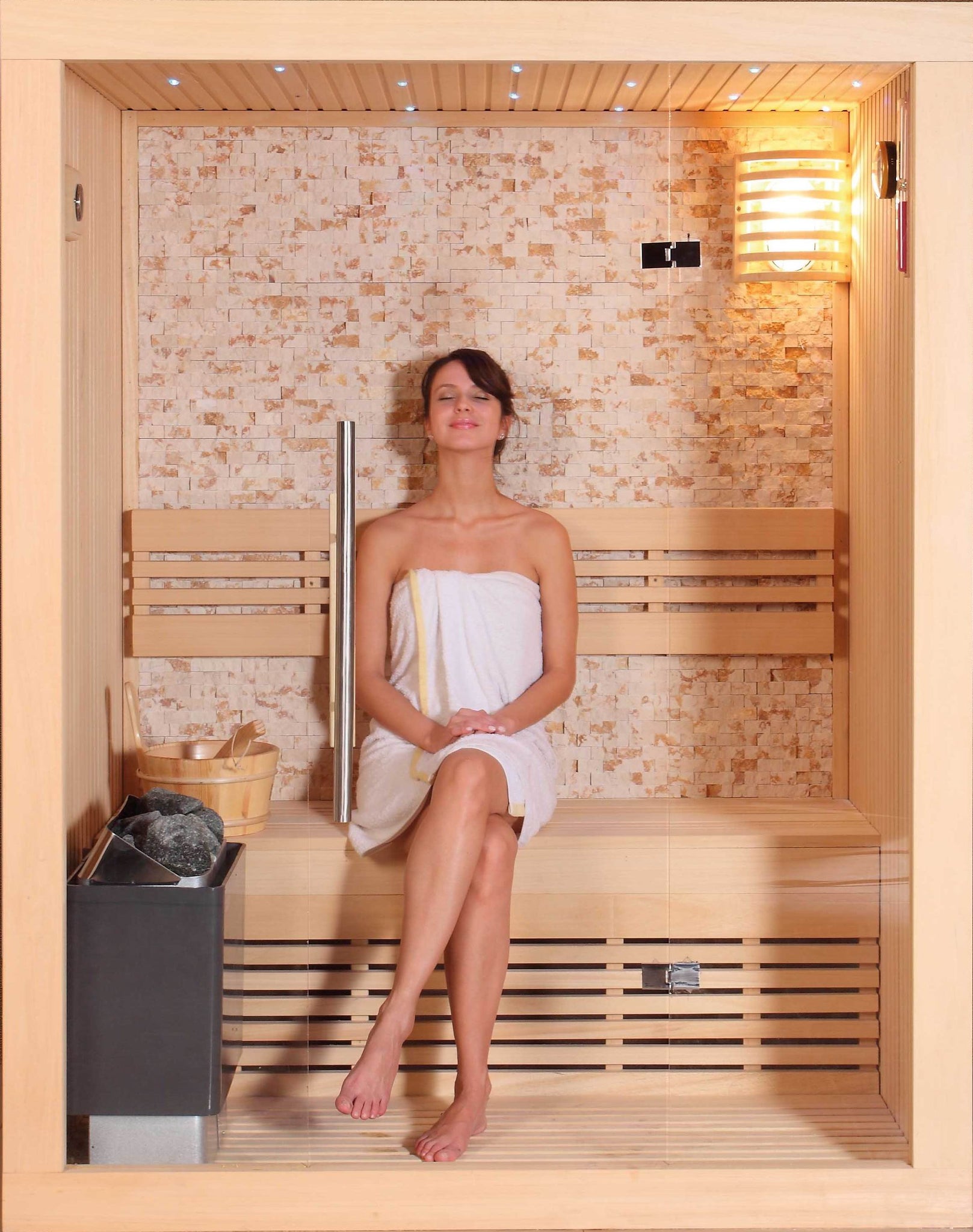Some Known Facts About Traditional Sauna.
Some Known Facts About Traditional Sauna.
Blog Article
The Of Traditional Sauna
Table of ContentsLittle Known Questions About Traditional Sauna.What Does Traditional Sauna Mean?What Does Traditional Sauna Do?The 4-Minute Rule for Traditional Sauna
A lot of the weight lost in a sauna is water loss and is re-gained upon rehydrating. However, without a doubt sauna can be a fundamental part of a healthy and balanced weight-loss program. To consider the differences between standard and IR saunas, I will certainly divide these right into verifiable, theoretical, and fabricated distinctions.Thus, the best point in the saunawhich goes to the ceiling straight over the sauna heateris typically between 185 and 190 F. Traditional Sauna. Claims that a traditional sauna surpasses 200 F is merely not true and not suitable for electric saunas sold in the US. The temperature level for a far-infrared sauna is normally set between 120 and 140 F; however, unlike the traditional sauna, the objective in and IR space is not to achieve a high temperature level
Due to the fact that of this, the temperature difference is virtually unnecessary, since extreme sweating leads to both sauna types, yet the approach of heating up the body is different. In an IR sauna the bather will certainly feel hot and will sweat a lot, however at much lower temperature levels. Therefore, if the goal is to invest longer periods of time in the sauna, the IR sauna is an excellent option.

A Biased View of Traditional Sauna
When the high temperature level is achieved, the elements cycle on and off to keep the high temperature level. Most conventional sauna users appreciate putting water over the rocks to develop vapor to elevate sauna humidity degrees. The benefits of pouring water over the rocks consist of: making the room more comfortable, dampening the nasal passages, and enabling the use of aromatherapy by blending necessary oils with the water.
In a far-infrared sauna, the heat waves penetrate the body to effectively heat the body and raise the body core temperature. To attain this boosted temperature level, Far-infrared emitters develop infrared power which is close to the same wavelength as that which the body naturally emitsoften referred to as the "Important Array" of 7 to 14 microns), so the power is well obtained by the body.
When the power enters the body, it triggers the body temperature level to enhance and eventually causes sweat. In an infrared sauna it's crucial for the emitters/heaters to continue to be on virtually frequently. Because there is no mass of rocks to preserve heat, the sauna will cool down if the emitters shut down.
As mentioned over, the sauna bather in an infrared room desires to place himself in front of operating emitters to obtain maximum gain from the warmth. The home heating time for the 2 areas can be really different, relying on exactly how the rooms are made use of. For a conventional sauna, a bather ought to allow 30-40 minutes for the space to attain a desired temperature level and to appropriately pre-heat the rocks.
6 Simple Techniques For Traditional Sauna
A well built sauna will commonly accomplish a temperature of 150-160 F in about 30-40 minutes. For hotter temperatures, the room might require to heat for a longer duration.
To some, 15 mins was "wasted" while the infrared energy heated up the timber panels instead of warming a body, while others locate a pre-heated room to be much more comfortable and believe an elevated starting temperature level is needed to start sweating. The size of suggested use for each and every see room is about the exact same (10-15 minutes per session); nevertheless, because of the lower air temperature levels and the capacity to feel the results of infrared heat quicker than a typical sauna, it is not unusual for an individual to invest an overall of 20-30 mins in an infrared sauna.
Conventional saunas have a tendency to be bigger (hence make use of even more electricity) than infrared saunas, although traditional saunas are definitely offered in one and 2 individual dimensions too. For a two-person traditional sauna, 5x6 or 5x7 size is most prominent. The leading bench can comfortably seat two or 3 individuals and is likewise enough time to rest during the sauna session.


The ordinary price per kWH of electrical energy in the U.S. is about $0.11, so a 4.5 kW heating unit will certainly cost about $.50 to run for one hour, if the heating system runs constantly for one hour. Commonly a sauna heater will run for 75% of the first hour and 50% of succeeding hours on given that the components cycle once the set temperature is achieved.
All About Traditional Sauna
A 2 person far-infrared space is typically physically smaller sized than a standard sauna, frequently concerning 4' x 4' or smaller sized. The IR heater is normally 1.5-1.7 kW utilizing a 120 volt 15 amp plug-in service. Given that the space can be used sooner than a sauna space, we will think the space is made use of for to of an hour consisting of warm up time.
There is a rarely discussed difference in the social experience in between the two areas. While our culture has lost a few of the social advantage of the conventional sauna experience, it can be Discover More really socially satisfying. From household time in the sauna, to heart-felt conversations with loved ones, to sauna partiesthe traditional sauna experience can weblink lead to intimate interacting socially.
The majority of higher end infrared rooms consist of tinted light therapy, noise systems and full-glass fronts.
Report this page